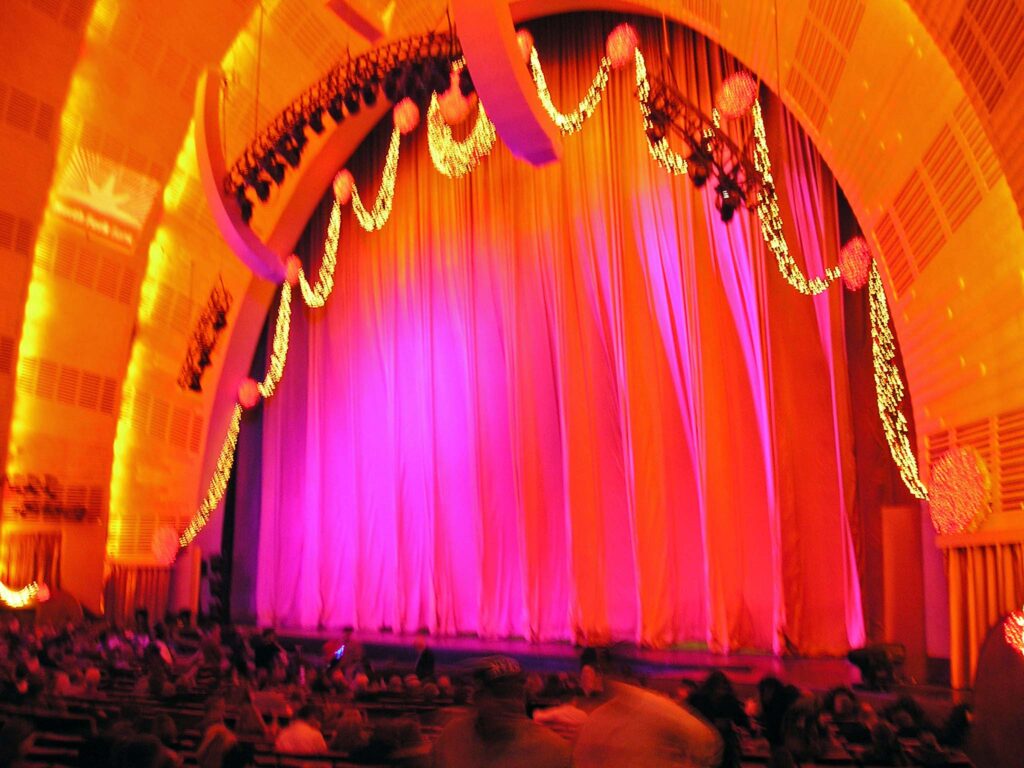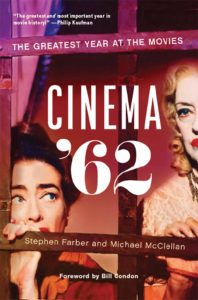For fans of the Academy Awards (if there are any left in these days of shrinking viewership) the prospect of crowning a Best Picture for 2022 from among ten nominees points out the first major difference between this year and 1962, arguably the greatest year at the movies. That is, in blunt terms, the difference between quantity and quality. In 1962 there were five best picture nominees, a tradition since 1944. In 2009, the field was expanded to “between 8 and 1o,” harking back to the first two decades of the awards (1927-43) when the nominees floated between five and twelve before being fixed at five. Fast forward to 2021, and the field was tweaked once again to ten, allegedly to honor all the cinematic excellence (a strictly relative term) and presumably to assure more slots for the popular commercial studio fare that had been largely neglected before expanding the field in 2009. Apparently they needn’t have bothered.
2022’s crop of contenders include an indie fave rave that has taken Hollywood by storm, Everything, Everywhere All at Once; a critics’ specialized darling, Tar; a studio biopic (actually an autobiography) from a master auteur in his twilight years, The Fabelmans; another studio biopic about a music legend, Elvis; another indie critical darling, Women Talking; a studio blockbuster sequel, Top Gun: Maverick; a third specialized critic’s choice, The Banshees of Inisherin; a Cannes Palme D’or winner that has divided both audiences and critics, Triangle of Sadness; another studio blockbuster sequel, Avatar: The Way of Water; and the only foreign-language film in the field (actually a remake of a nine-decade-earlier Oscar Best Picture) All Quiet on the Western Front. Aside from the three studio films that were responsible for a huge portion of 2022’s box office: Avatar, Elvis, Top Gun, and the summer sleeper smash, Everything, Everywhere…, the other six films have found varied but substantially lesser box office success, contributing to the contemporary crisis about the survival of movie theaters themselves with severely diminished post-pandemic ticket sales.
 Looking back at 1962, the five nominees, all major studio productions, reflected the currents of the era while still in the tenuous grip of the fading studio era. Three historical epics (the movie “spectaculars” of their day): Lawrence of Arabia ( a WWI biopic), The Longest Day (dramatization of WWII’s pivotal battle), and Mutiny on the Bounty (a remake of 1935’s Best Picture) competed against film versions of a Broadway smash (The Music Man) and a Pulitzer Prize winning novel (To Kill a Mockingbird). Coincidentally, all five ranked in the top seven of the year’s highest grossing hits, while four of the five were also well regarded by the nation’s critics. The one critical outlier, Mutiny on the Bounty, did have its supporters, but could not overcome comparisons to the original and its two stars, Clark Gable and Charles Laughton, despite the new version’s lure of the greatest actor of his generation, Marlon Brando. Unlike 1962, box office success and top Oscar nominations have not matched up for decades, a major difference between then and now.
Looking back at 1962, the five nominees, all major studio productions, reflected the currents of the era while still in the tenuous grip of the fading studio era. Three historical epics (the movie “spectaculars” of their day): Lawrence of Arabia ( a WWI biopic), The Longest Day (dramatization of WWII’s pivotal battle), and Mutiny on the Bounty (a remake of 1935’s Best Picture) competed against film versions of a Broadway smash (The Music Man) and a Pulitzer Prize winning novel (To Kill a Mockingbird). Coincidentally, all five ranked in the top seven of the year’s highest grossing hits, while four of the five were also well regarded by the nation’s critics. The one critical outlier, Mutiny on the Bounty, did have its supporters, but could not overcome comparisons to the original and its two stars, Clark Gable and Charles Laughton, despite the new version’s lure of the greatest actor of his generation, Marlon Brando. Unlike 1962, box office success and top Oscar nominations have not matched up for decades, a major difference between then and now. 


Which leaves us with this intriguing, speculative question—what would have been the additional five nominees if there was a field of ten in 1962? Inversely, what would be the five nominees in 2022 if the field had not been expanded? Addressing 2022 first, it might seem easy to identify a final five by counting down the films with the most nods: Everything, Everywhere All at Once (11), The Banshees of Inisherin (9), All Quiet on the Western Front (9, a big winner at the BATA awards, and the only foreign-language nominee unless you count the infrequent portions of Everything… that are subtitled), Elvis (8), and The Fabelmans (7). But where does that leave both Tar (6 nods including all the top categories of acting, directing and writing, and winner of both the NY and LA Film critic’s best film awards among other accolades) and Top Gun: Maverick (also 6 noms with a screenplay nod, and according to venerable filmmaker Steven Spielberg, “the movie that saved Hollywood’s ass!”? To say nothing of the other three nominees, Avatar (4), Triangle of Sadness (3), and Women Talking (2).
 In 1962 the field of five already had the most nominations: Lawrence of Arabia (10), To Kill a Mockingbird (8), Mutiny on the Bounty (7), The Music Man (6), and The Longest Day (5). So it would seem appropriate to anoint the other contenders, with the criteria of the mindset of the Academy in that era, and not looking back with the hindsight of time and critical reappraisal. Incidentally, The Longest Day, The Music Man, and Mutiny on the Bounty all made it to the final five without benefit of acting, directing or writing nominations. Three other films also scored 5 nominations each, with representation in the top categories as well as considerable box office success: The Miracle Worker (directing, best actress and supporting actress, writing), Days of Wine and Roses (best actor and actress, song), What Ever Happened to Baby Jane? (best actress and supporting actor, cinematography, and the added incentive of a show biz sensation and pop cultural phenomenon).
In 1962 the field of five already had the most nominations: Lawrence of Arabia (10), To Kill a Mockingbird (8), Mutiny on the Bounty (7), The Music Man (6), and The Longest Day (5). So it would seem appropriate to anoint the other contenders, with the criteria of the mindset of the Academy in that era, and not looking back with the hindsight of time and critical reappraisal. Incidentally, The Longest Day, The Music Man, and Mutiny on the Bounty all made it to the final five without benefit of acting, directing or writing nominations. Three other films also scored 5 nominations each, with representation in the top categories as well as considerable box office success: The Miracle Worker (directing, best actress and supporting actress, writing), Days of Wine and Roses (best actor and actress, song), What Ever Happened to Baby Jane? (best actress and supporting actor, cinematography, and the added incentive of a show biz sensation and pop cultural phenomenon).
Other contenders with fewer (but still major) nods include the following: Birdman of Alcatraz (4 – best actor, supporting actor and supporting actress, cinematography), Divorce Italian Style (3 – best actor, directing, writing, with the first nom in the best actor field for a foreign-language film and a crossover commercial success from art houses), Sweet Bird of Youth (3 – best actress, supporting actor and supporting actress), David and Lisa (2 – directing and writing, and one of the first independent productions to score such prestige nods), and The Manchurian Candidate (2 – supporting actress, film editing). And what of these candidates: Gypsy (3 – cinematography, music adaptation), Freud (2 – screenplay, music score), Lolita (1– screenplay), Long Day’s Journey into Night (1 -best actress), The Man Who Shot Liberty Valance (1- costume design), Billy Budd (supporting actor), or Through a Glass Darkly (1- screenplay and 1961’s foreign-language winner)?
Of course, Lawrence of Arabia did go on to claim 7 Oscars including Best Picture and Director. Gregory Peck won his sole Oscar as Best Actor for To Kill a Mockingbird, also an adapted screenplay and set direction winner. The other three acting awards were all upsets: Best Actress Anne Bancroft (The Miracle Worker) over sentimental favorite Bette Davis (What Ever Happened to Baby Jane?), Supporting Actress Patty Duke over presumptive favorite Angela Lansbury (The Manchurian Candidate), and Supporting Actor Ed Begley (Sweet Bird of Youth) over newcomer Omar Sharif (Lawrence of Arabia). Divorce Italian Style won for original screenplay, but don’t let any of these winners prejudice your choices for the other five prospective nominees in our speculative game.
One more point—in ’62 both the paying public and Oscar voters saw all the nominees in movie theaters, as intended by filmmakers and the entire motion picture industry. There were no other outlets to view them, except for television. Although television at that time (and 21st century streamers later) were looming large as a factor in global filmmaking aesthetics and economics, the medium did not have the dominant impact it has today. Hence the key phrase for Cinema ’62: the greatest year at the movies.
This year’s Oscars are March 12. Pick what would have been the five finalists before the big night. And try expanding the ’62 field to ten just for the fun of it. Good luck…
OSCAR Update – 2022/23 winners
And the winners are…as expected, Everything, Everywhere All at Once was named Best Picture at the 95th annual Academy Awards, claiming 7 statuettes, which ties it with ’62’s Lawrence of Arabia in all-time Oscar totals (reinforcing the notion that each year the Oscar winners are indeed of the moment—only the passing of time will testify to their lasting impact and influence). The multiverse phenom Everything, Everywhere swept along 3 of its actors (Best Actress Michelle Yeoh, Supporting Actress Jamie Lee Curtis, Supporting Actor Ke Huy Quan, only the third time 3 winners came from the same film in Oscar history) along with writer-directors the Daniels, and film editing. Academy voters also honored 4 of the other Best Picture nominees: All Quiet on the Western Front (4, including International Feature), Top Gun: Maverick, Avatar, and Women Talking with one Oscar apiece. But there was no Oscar love for the other 5 best picture nominees, with The Banshees of Inisherin, Elvis, The Fabelmans, Tar, and Triangle of Sadness all going home empty handed. The winners might answer the question of what would have been the traditional 5 nominees, but I don’t really think so. That challenge still remains open for speculation…





